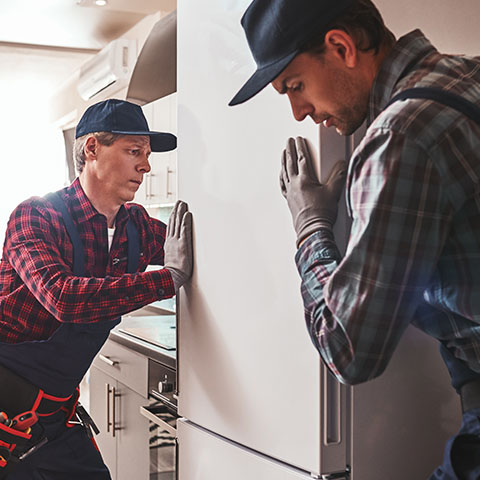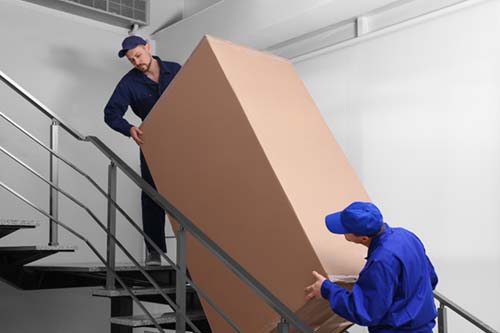Refrigerator Installation
Refrigerator Installation is typically done by the delivery department of the retail store. Certified typically installs built-in refrigerators or adds new waterlines for standard refrigerators.
Installation usually requires two technicians. Your installer will remove the old unit if necessary (retail stores usually charge for appliance removal) and unpackage the new unit. Ideally, you’ll get a chance to confirm that the refrigerator is the correct model and color before it is moved into your home.
Your refrigerator will then be moved into close proximity. If doorways are too narrow to accomodate your model, installers are able to remove the doors.
Your installer will hook up the wateline to your refrigerator.
Next your unit will be moved into place. The feet will be adusted. Standard refrigerators can typically only adjust with the front two feet. These adjustments prevent wobble but do not always allow the unit to be perfectly level.
Your installer will unpackage and unwrap all of the paper, plastic and tape from your refrigerator and put the shelves, drawers and filter in place in your refrigerator.

How do I know if my Refrigerator is Installed Correctly?
With a standard refrigerator, there is not a lot to check. Below are a couple of things to watch for:
- Does your refrigerator wobble? Installers can only adjust the front two feet of a standard refrigerator. However, they should be adjusted to prevent wobble.
- Are there any water leaks? The installer should hook up the waterline and test it before he leaves. If you seen any indication of a water leak, turn off the water valve under your sink and call Certified immediately.
- Is everything in place in your refrigerator? Your installer should put all of the shelves and drawers in place and install your water filter.
Other Considerations
Below are a few thing to consider when installing a standard refrigerator:
- Consider Your Delivery Path
- Door Clearances and Swing
- Adding a Waterline
Consider Your Delivery Path
It is a good idea to think through the path through which your delivery team will need to move the refrigerator. Look at the width and height of doorways, hallways, stairs, cabinets.
Nothing is more frustrating than waiting for your refrigerator only to find out that it doesn’t fit. Your delivery team can remove refrigerator doors if necessary to get through doorways. Door removal may result in additional charges.
You could move furniture or wall decorations in advance to avoid any possible issues.

Door Clearnance and Swing
Depending on your model, you may find that the door comes in contact with walls, cabinets or other appliance handles and it is unable to open all the way. Or you may find that the way that the door swings is not ideal based on the layout of your kitchen.
It is a good idea to keep door clearance in mind before you select your model. The owner’s manual should provide the amount of clearance required for your door to open correctly. Search for your model number online to find the owner’s manual.
Depending on the door type, if the door is swinging the wrong direction, your technician may be able to switch the swing to the opposite side. That typically results in an additional charge.
Refrigerators with French doors are not typically able to be swapped.


Adding a Waterline
Your refrigerator installer should be able to hook up your existing waterline.
You should run a couple of gallons of water through your refrigerator before you drink any. This will wash the impurtities out of your system. Also, throw away the first two batches of ice that the refrigerator makes before starting to use the ice.
If you do not have a waterline behind your refrigerator, your Certified technician may be able to install one. This will result in additional charges.
